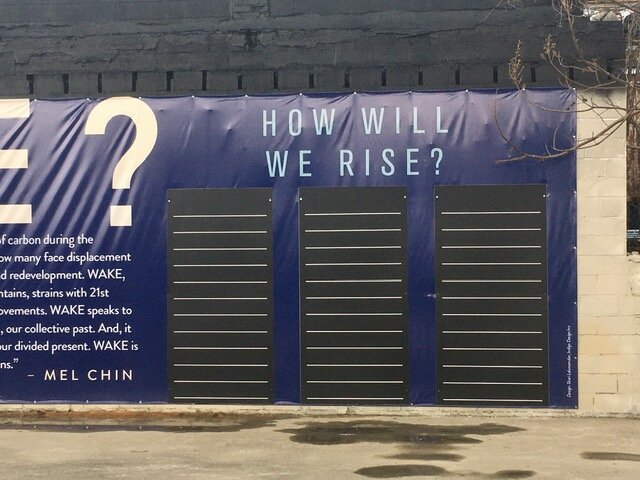The primary goal of the West-Wayne tactical urbanism project was to create a safer and slower intersection for pedestrians, neighbors, and bikers who utilize that segment of West Asheville. The last project Street Tweaks completed was a big overhaul of Coxe Avenue in downtown. The project was the first of its kind in Asheville. The Coxe Ave mural, bike lanes, and pedestrian crosswalks transformed that fast street into a slower more people-friendly space. So when the city asked Street Tweaks to remove the butterfly mural and keep the cross-walks and bike lanes, the feedback seemed to incentivize the multi-modal aspect of the project, instead of the art-based aspects. So what is the importance of the aesthetic features of a tactical urbanism project?
We all want to live in safe neighborly places that feel walkable and inviting. But the way we create these spaces is as important as the reason why we create them. As a community artist, I am interested in how we assign meaning to places and how places engage community. I think these two ideas are intertwined. When we feel like a place is special to us, we use it and we create memories there. The space becomes more meaningful the more time we spend there. When creating community spaces, I like to think about the collective feelings, memories, history, and vibes of the space. This shared sense of place is a key ingredient to place-making. In order for a community to rally behind and integrate a new project, construction, or business, the community’s collective knowing must be harvested.
I had these concepts in mind when approaching the West-Wayne project. My own memory of the space centered around meditative walks in Christopher’s Garden. For years I used to frequent the Shambhala Meditation Center that sat in a big old house next to the intersection. During retreats we would walk around the neighborhood, explore the garden and engage our senses. This activity spurred on the community survey I gave to neighbors to inform the aesthetic design. I wanted to tap into the collective memory of the space by giving people an opportunity to get present and tune into the feeling of the space. We asked folks to answer questions about how they felt, what they saw, smelled, and heard in that space. The answers we received recalled the sweet art garden that used to inhabit the corner and the flora and fauna that seemed to spill over into the sidewalks. The final design features milkweed leaves and buds, goldfinch, and blue bottles from Christopher’s Garden.
I think this is a powerful way to create public art. My job, in this project, is to listen and provide space for ideas to emerge and translate those ideas into images and compositions. My hope is that the space becomes more integrated into the community’s living, breathing and changing environment; and that the intersection not only becomes safer, but also more inviting, engaging and connecting.


























